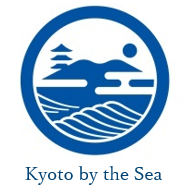marinetopia resort, glamping. located in Miyazu
Marinetopia take camping to the next level, with glamping that puts you in one of the most naturally beautiful environment’s on the planet. Marintopia overlooks Amanohashidate, "one of Japan’s “Three Scenic Views” and the Amanohashidate Bay which is a member of UNESCO’s “World’s most beautiful bays” club. You will be sleeping in ultimate comfort year-round as the units have both heating and air conditioning. The meals are both fun and healthy, allowing you to cook a variety of local specialties. Be sure to save room for dessert and drinks.
price range: ¥¥¥ー¥¥¥¥
Saika-an
Saika-an is a guesthouse in a converted old Japanese-style house located in central Maizuru. The guesthouse has two floors, cooking space, private gardens, and plenty of optional activities like bicycle rentals and local sea-side town tours. The staff here speak English, making booking, and getting around quite easy. The pricing is also very affordable. Check out Saika-an’s website or contact Kyoto by the Sea DMO for booking / more information.
Hotel Holiday Home
Hotel Holiday Home is located on a spacious, private plot of lush land on Kumihama Bay, minutes away from the Japanese Sea. The grounds of Holiday Home contain walking paths with flower gardens that lead to a variety of secluded accommodations. There are garden views, lawns, bay views, and a spectacular dining room with glass walls so that you are immersed in nature your entire stay. There is an excellent soba restaurant onsite as well. Holiday Home is located close to Kabutoyama Train Station, Kinoshita Sake Brewery, and Mt. Kabuto path and observation deck. This is a place that combines comfort and nature therapy, as well as providing healthy, local cuisine.
For assistance with booking or for any questions, contact Kyoto by the Sea DMO.
Charoku Inn
Charoku is an inn that first opened in the castle town of Miyazu in 1716. It primarily lodged guests who had traveled to the area to receive cargo from the kitamaebune trading ships that docked at the nearby port. Many of its guests were traveling on business, so the rooms are relatively small, but a historic ambiance emanates from the architecture and furnishings.
The current building is a treasured example of three-story wooden architecture from the Taisho era (1912–1926). It was designated a Tangible Cultural Property of Japan in 2010. The latticework and wooden screens of the facade represent traditions of woodworking that have arguably been lost with previous generations of craftsmen. Tatami flooring, alcoves, transoms, hanging scrolls, and fresh flowers enhance the elegance of the modest traditional-style guest rooms. A prized work of calligraphy by the distinguished navy commander Togo Heihachiro (1848–1934) hangs on the second floor.
Guests may enjoy bathing in the natural hot spring (onsen) during their stay. The regional seafood specialty is buri shabu, a hotpot of Japanese amberjack (also known as yellowtail), served at the inn during the winter season.
Seikiro Ryokan
The Seikiro Ryokan inn opened in the castle town of Miyazu in the late seventeenth century. The landscape of the nearby Amanohashidate sandbar and the bustling port at Miyazu drew many visitors to the area in those days and even now. The inn, as it stands today, is a traditional-style three-story wooden building constructed over 100 years ago. It was recognized as a Tangible Cultural Property of Japan in 2010.
Many painters, poets, and other artists have frequented the inn over the years. Poems, calligraphy, and other artwork received from guests, some of which date back to the Edo period (1603–1867), are on display throughout the building. The third-floor banquet hall is decorated with fusuma-e (paintings on sliding partition panels) by Suzuki Hyakunen (1828–1891), depicting nature scenes from each month of the year. On the second floor, a long, painted scroll from 200 years ago and a copy of the renowned View of Amanohashidate painting by Sesshu Toyo (1420–1506) illustrate how the sandbar and surrounding scenery have changed over time. With its wealth of art and history, the inn makes the most of its museum-like atmosphere.
The guest rooms overlook the lush greenery of the garden and are decorated in traditional Japanese style. Guests may relax in the natural hot spring bath and enjoy seasonal seafood served year-round in the restaurant.
If you are interested in any of these accommodations, drop us a message using the handy ‘contact’ button at the bottom of the page.








